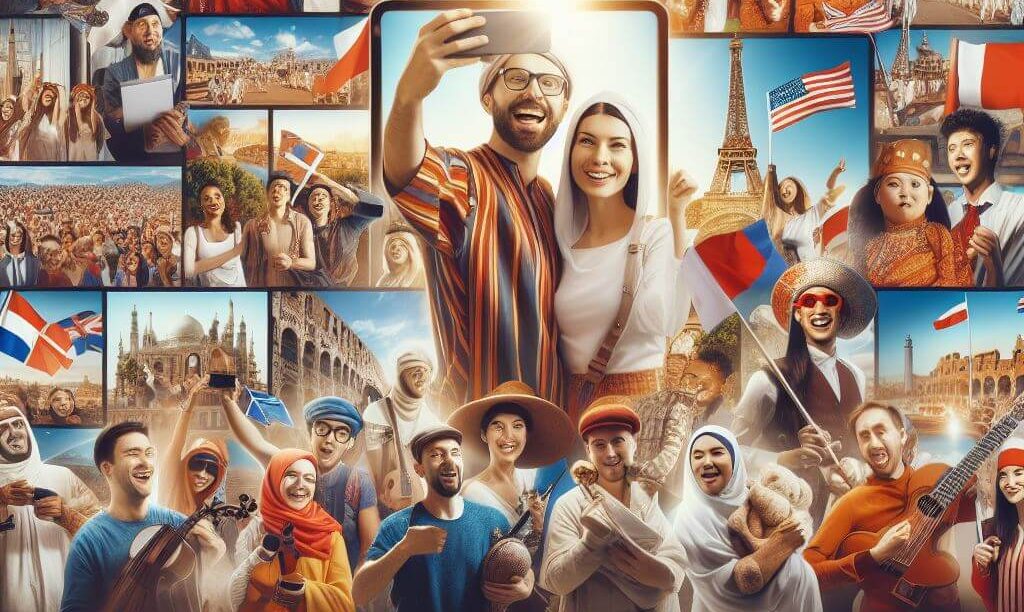
Making a decision can often feel like an insurmountable challenge. Every day, whether it’s our personal lives or our careers, we face the daunting task of starting something new or taking the next step. “Starting Smart: Unleashing the Power of Beginning with Confidence” is your essential guide to navigating these pivotal moments.
Boundless Interaction: Connecting Cultures Across the Globe
Imagine a place where geographical boundaries do not dictate who your classmates are or where your lectures take place. Virtual campuses have made this possible. They connect students from New York to New Delhi, from Cairo to Canberra, with just a click, and in doing so, initiate the beautiful story of cultural exchange. While traditional campuses offer a certain level of diversity, online universities amplify this by transcending international lines, time zones, and physical constraints.
Through synchronous and asynchronous learning models, students from all walks of life can share their viewpoints, educate others about their unique cultural practices and, in the process, dissolve preconceived notions and biases. In discussion forums and group assignments, what starts as an exchange of ideas about a particular subject can quickly evolve into a broader discussion about cultural beliefs and traditions. These interactions are a critical component in broadening the horizons of students, fostering a sense of global citizenship and empathy.
The flexibility of virtual classrooms means that individuals from different countries and cultural backgrounds can participate in a shared learning experience without forsaking their personal responsibilities or cultural practices. This enriches the learning environment and also provides a unique opportunity for students to showcase and celebrate their cultures through various online campus events, virtual international days, language exchange programs, and cross-cultural workshops.
Technological Synergy: Bridging Cultures Through Innovation
Advancements in educational technology play a significant role in enhancing cultural exchange on virtual campuses. Through the seamless integration of collaborative tools such as video conferencing, social media platforms, and virtual reality environments, these campuses recreate the organic interactions that foster understanding and friendships in traditional settings.
Interactive tools designed for virtual classrooms enable real-time collaboration and discussion, contributing to a more robust cultural exchange by allowing students to witness and virtually immerse themselves in experiences far removed from their own. When a student in Brazil can virtually walk through a festival taking place in India, or when a student in Italy can collaborate on a project with peers in Kenya, the classroom transforms into a gateway to a multicultural education.
Furthermore, virtual campuses use these technologies to celebrate cultural diversity by hosting online international festivals, virtual guest speaker events, and digital showcases of student work that explore cultural themes. Such events encourage students to engage with and appreciate the diverse tapestry of their peers’ backgrounds and perspectives.
Preparing Students for a Globalized World
Employers today are looking for individuals who are adept at navigating the complexities of a diverse cultural landscape.
Virtual campuses, with their culturally diverse student bodies, provide an ideal environment to develop such cultural competencies. Students learn to communicate effectively with people from various cultural backgrounds, adapt to different cultural expectations and workstyles, and develop a keen sensitivity to the nuances of cultural perspectives different from their own.
In group projects and peer-to-peer interactions, students are constantly honing their ability to manage cultural diversity. They develop skills to bridge differences, negotiate meaning, and build consensus across cultural divides. These virtual collaboration skills are directly transferable to today’s workplace, where telecommuting and international teams have become the norm.
Creating a Space for Mutual Respect and Inclusivity
A pivotal aspect of cultural exchange on virtual campuses is the concerted effort to create environments that are inclusive and respectful of all students. This is not just a matter of policy but of campus culture. Virtual campuses actively work to create spaces where each student feels valued and heard, and where differences are celebrated.
This inclusivity is often demonstrated in how course materials are presented, ensuring that multiple cultural perspectives are included in the curriculum. It’s in the steps that institutions take when they offer resources in multiple languages, hold cultural sensitivity training for staff, or set up support systems for students who may be navigating the complexities of participating in a culture different from their own.
Moreover, it is in these inclusive environments that students find the confidence to share their own culture and the curiosity to learn about others. Whether through peer mentorship programs or international student associations, virtual campuses provide avenues for students to connect on a level that surpasses the superficial, fostering deep and lasting cultural insights and friendships.
Challenges and Opportunities
While virtual campuses lay the groundwork for an enriching cultural exchange, they also face challenges that need to be addressed. Issues such as digital divide, language barriers, and time zone constraints can hinder the experience for some students. However, these challenges also drive innovation as institutions strive to develop more inclusive and accessible learning solutions.
As we look to the future of education, virtual campuses stand as testament to the human spirit’s innate drive to connection and understanding. They offer a glimpse into a world where learning is truly boundless, and where cultural diversity is not just an add-on but the very essence of the educational experience.
Engaging with one another in this shared digital space, students build bridges of cultural understanding that can bear the weight of a more empathetic and interconnected world. It is in the heart of these virtual learning communities that we find the pulse of cultural exchange, thumping to the rhythm of shared knowledge, mutual respect, and the unwavering belief that, despite our many differences, we are all lifelong learners on the same endless quest for growth and understanding.
